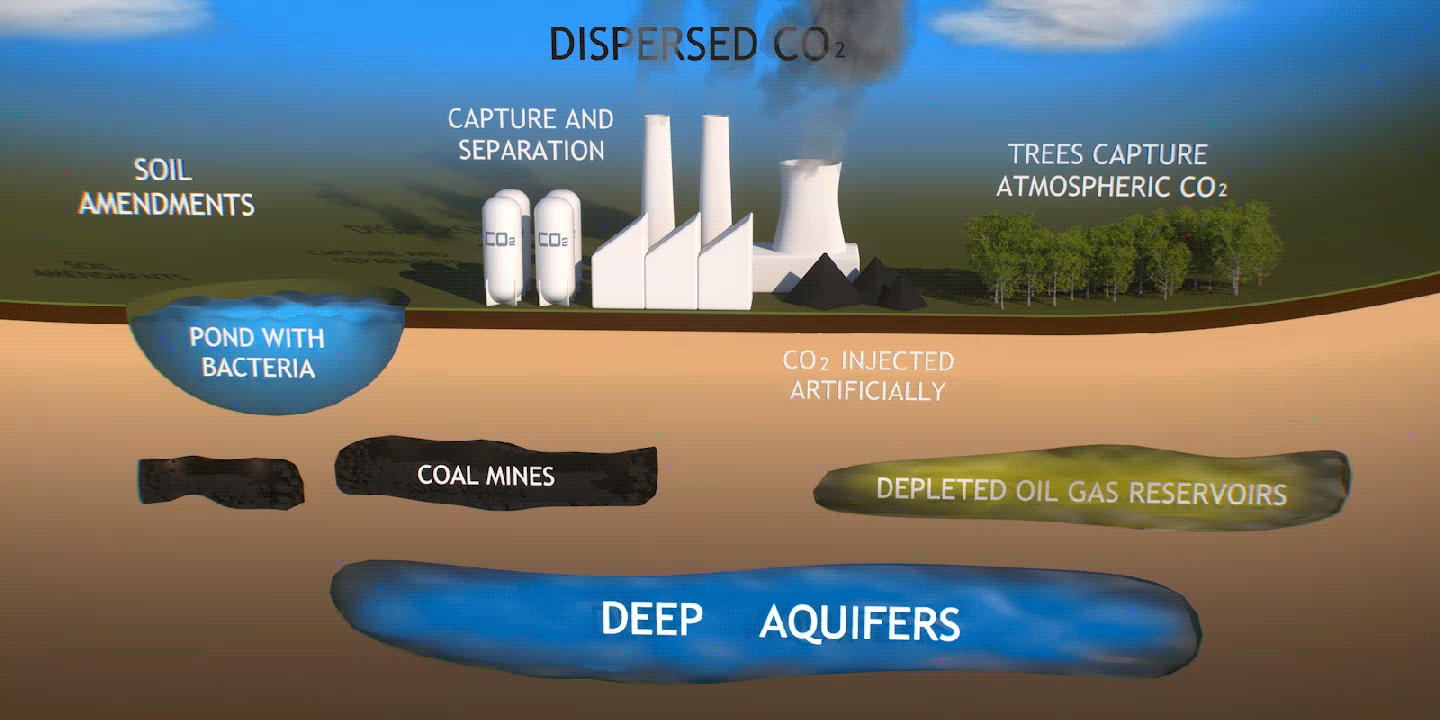Capturing Carbon for Our Planet’s Future
According to the 2024 Global Carbon Budget, humans collectively release more than 40 billion tons of carbon dioxide into the atmosphere each year. Carbon emissions are a major contributor to the rapid advancement of climate change. This poses a considerable challenge for humanity: How do we meet the global demands of industry while reducing carbon emissions to enable a livable planet in the future?
A new National Science Foundation-funded center — a collaboration between the USC Viterbi School of Engineering and the Penn State College of Earth and Mineral Sciences — will tackle this problem directly. Its goal? To enable industrial decarbonization at scale by supporting carbon capture and storage innovation.
The new CO2 Storage, Modeling, Analytics, and Risk Reduction Technology Center (CO2-SMART) is led by Behnam Jafarpour, N.I.O.C. Fellow and Professor in USC’s Mork Family Department of Chemical Engineering and Materials Science. Jafarpour, an international leader in research at the interface of machine learning and energy science, holds the Energi Simulation Industrial Research Chair in Subsurface Energy Data Science.
Carbon storage technologies capture emissions at the source, stopping their release into the atmosphere. The captured CO2 is then transported via ship or pipeline to a suitable storage site, where it is injected into deep saline aquifers, usually more than a kilometer underground. These aquifers are sealed by layers of impermeable natural rocks, known as caprock, ensuring that the captured CO2 cannot return to the atmosphere.
However, implementing this technology at commercial scale creates a range of technical and practical challenges. Crucial to the success of a carbon storage project is the accurate prediction of how the captured CO2 will behave in the complex underground environment of an aquifer. Industry must also foster a skilled workforce that can successfully implement and manage these large geologic CO2 storage projects while working within regulatory frameworks.
The CO2-SMART Center was founded to address these challenges and advance safe and cost-effective geologic CO2 storage science and technologies by establishing a cooperative research program among university partners, government, industry, national labs and foundations.
“CO2-SMART aims to tackle some of the key scientific challenges faced in commercial deployment of geologic CO2 storage by developing advanced technologies to improve its safety, efficiency and economic viability,” said Jafarpour, who also directs the Subsurface Energy and Environmental Systems Lab at USC.
“The center provides a unique opportunity to partner with industry and government to work toward addressing these challenges through collaborative research projects that are carried out by a multidisciplinary team of researchers with expertise in engineering, earth science, and energy policy and economics,” Jafarpour added.
Leading the center’s Penn State site is Sanjay Srinivasan, director of that university’s EMS Energy Institute. Srinivasan said that the development of technologies to accurately characterize injection sites, monitor displacement of the injected CO2 and manage reservoir pressure was crucial for carbon sequestration projects.
“Equitable access to pore space and streamlined permitting processes are key challenges for policymakers and industry,” Srinivasan said. “Research at our center will address these challenges, facilitating rapid and safe project deployment. Researchers at USC and Penn State, renowned for their contributions, are eager to participate in this effort to create safe and rapidly deployable technologies and strategies for industry and regulators.”
CO2-SMART will look closely to its industry partners to help develop research programs that directly address the real-life challenges of commercial CO2 storage projects. The center’s close industry ties also enrich teaching and learning for USC Viterbi and Penn State students, with opportunities for collaborative projects and internship experiences. The center aims to develop and cultivate a skilled workforce capable of driving future innovations in the design and implementation of geologic CO2 storage as a key climate change mitigation strategy.
“The creation of this important national center at USC, in partnership with Penn State, is a significant achievement that enhances the recognition and synergy of our energy transition efforts,” said Iraj Ershaghi, director of the Ershaghi Center for Energy Transition at USC. “The NSF center’s focus on developing reservoir suitability screening criteria for subsurface CO2 storage is pivotal for the evolving industrial decarbonization projects.”
The CO2-SMART Center was officially launched at the USC campus with a kickoff meeting on Feb. 18. The meeting brought together industry sponsors and participants, as well as researchers and students from the two universities.
In addition to advancing the science and technology of geologic carbon storage, this unique partnership between industry, government, and academia began its mission by featuring 10 cross-university collaborative project proposals for the 2025 cycle. The proposed research topics represented the six main thrust areas of the center and included laboratory experiments, numerical modeling, and the use of artificial intelligence to solve challenging industry problems. An important agenda item for the meeting was an industry workshop to ensure that the center’s research focus aligned with the priorities and needs of its industry sponsors. Jafarpour said that with the kickoff meeting behind it, the center is now focused on starting the collaborations on the selected projects for 2025.




